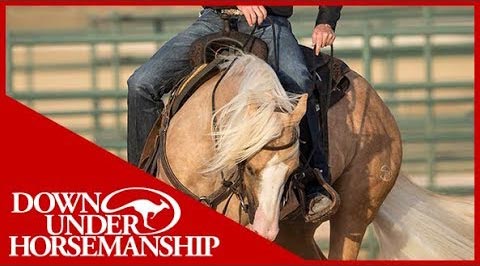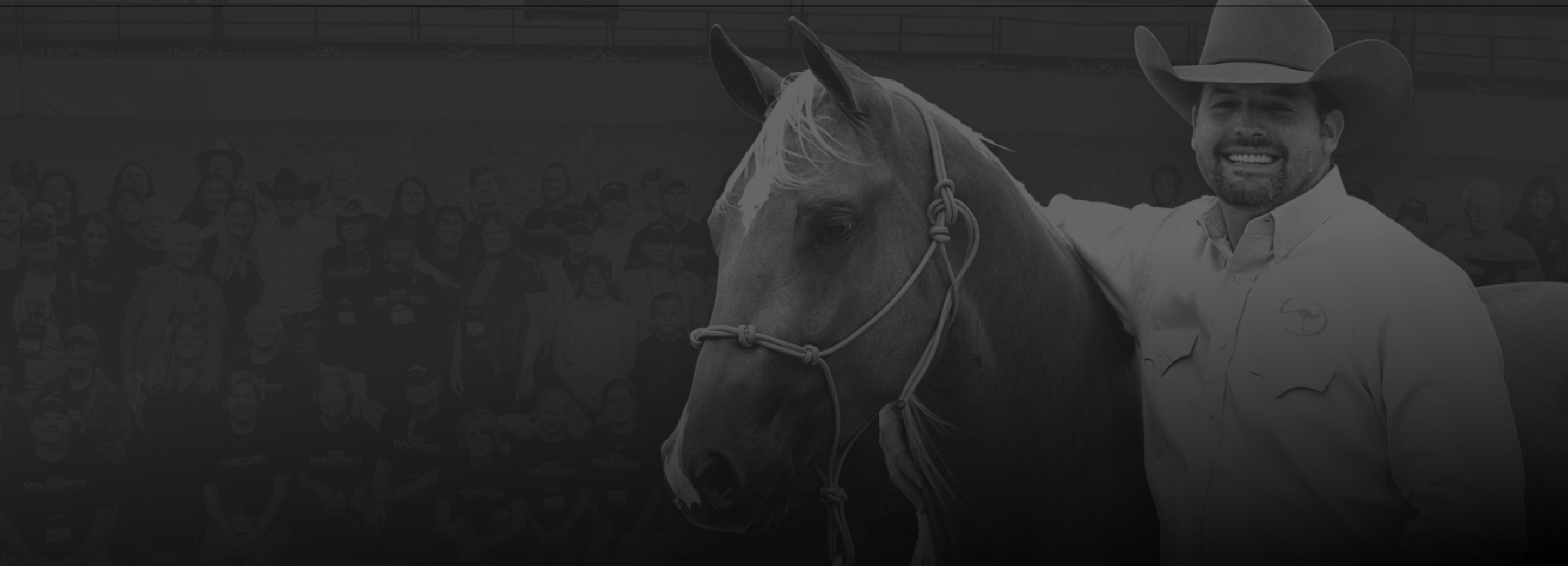
For the past 20 years, Clinton Anderson from Downunder Horsemanship has devoted his life to creating the best training tools and videos available to help bring his method to you. Join him on his weekly endeavors of tackling some of the most challenging situations with problem horses, and problem owners. This week, Clinton explains the difference between concept lessons and the “do it now” stage.
Clinton begins the lesson by telling us the difference between the two basic stages of training: the concept stage and the “do it now” stage. The concept lessons are the process of teaching a horse what you want him to know. This includes the basics as well as the details of a specific type of training. You act as a teacher and encourage your horse to learn, then reward them when they try, no matter how slight that try might be. Your goal is to get the horse to understand the concept of the lesson. It helps develop the understanding between right and wrong and set expectations. The “do it now” stage of training is when you look for the horse to master the lesson. You do that by increasing the energy and pressure in how you cue him. This change allows you to take your horse from a C performance to an A-level performance. The “do it now” stage of training helps improve response time and reactivity, thus creating a stronger relationship between a horseman and his horse. However, don’t move on to this stage until your horse fully understands what’s expected of him. Otherwise, you’re going to confuse your horse and potentially even frighten him.
Determining the level of pressure to use during the “do it now” stage of training takes experience to develop because a horse doesn’t stay exactly the same every day. Just like us, how they react changes over time depending on their mood and energy levels. This is why, when you’re working with your horse and cuing him to do a maneuver, you should always start gently with the least amount of pressure and increase the pressure as needed depending on your horse’s reactions and mood. If you always ask your horse with with gentle pressure, soon gentle is all you’ll ever have to be.
Clinton reminds us that sometimes, you have to go through some ugly stuff to get to the good stuff. You can’t judge the process when you’re going through the storm—you have to trust the process and wait for the results. Horses aren’t always fond of change, so if you have a problem horse, you need to be firm and stick to the Method. If they’ve been dominating you for a long time or disrespectful towards you, it’ll take work and consistency on your end to correct the disrespectful behavior. When you let your horse continue acting poorly, you’re reinforcing their negative behaviors and decreasing the likelihood that they’re going to change over time. As he always says, a horse’s problems tend to originate from problems with the owner. This doesn’t necessarily mean you can’t make progress, but you need to realize that your horse’s behavior is your responsibility and if you want him to change the way he behaves, you have to change the way you interact with him. Once you acknowledge this, you’ll make improvements with your horsemanship. If your horse is riding well, acting well, and training well, you’re doing a great job as a horseman and deserve to be congratulated.
To learn more about the Downunder Horsemanship training method, become a member of the No Worries Club, or to get information on any of the products seen on our show, head over to our homepage and download the Downunder Horsemanship app today! If you’re interested in getting accelerated results, let a Clinton Anderson Certified Clinician bring the Method to you!

Want To Learn More? SIGN UP FOR OUR LOYALTY PROGRAM
Master your horsemanship training through Clinton’s step-by-step method videos by joining the No Worries Club today. Becoming a club member ensures you get VIP pricing on all of Clinton’s must-have training tools and resources. Plus, you’ll enjoy all the phenomenal benefits that come with club membership!



